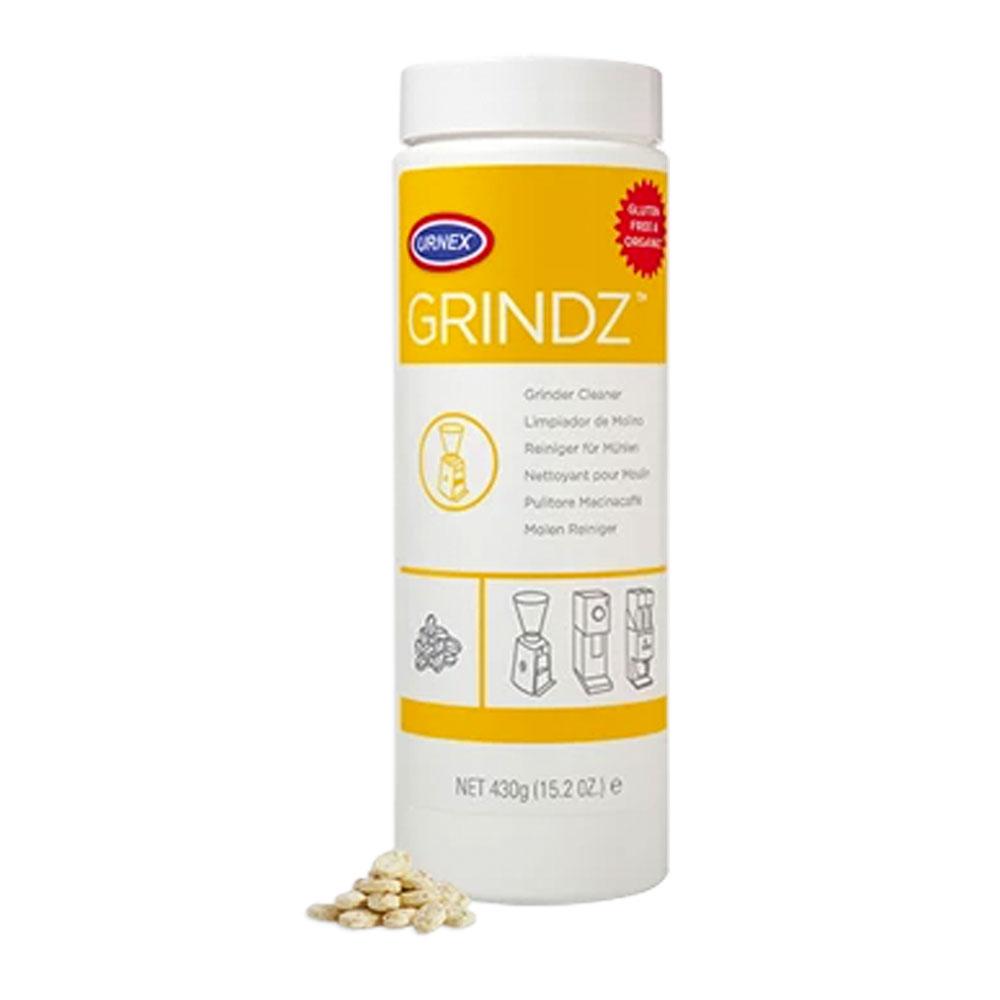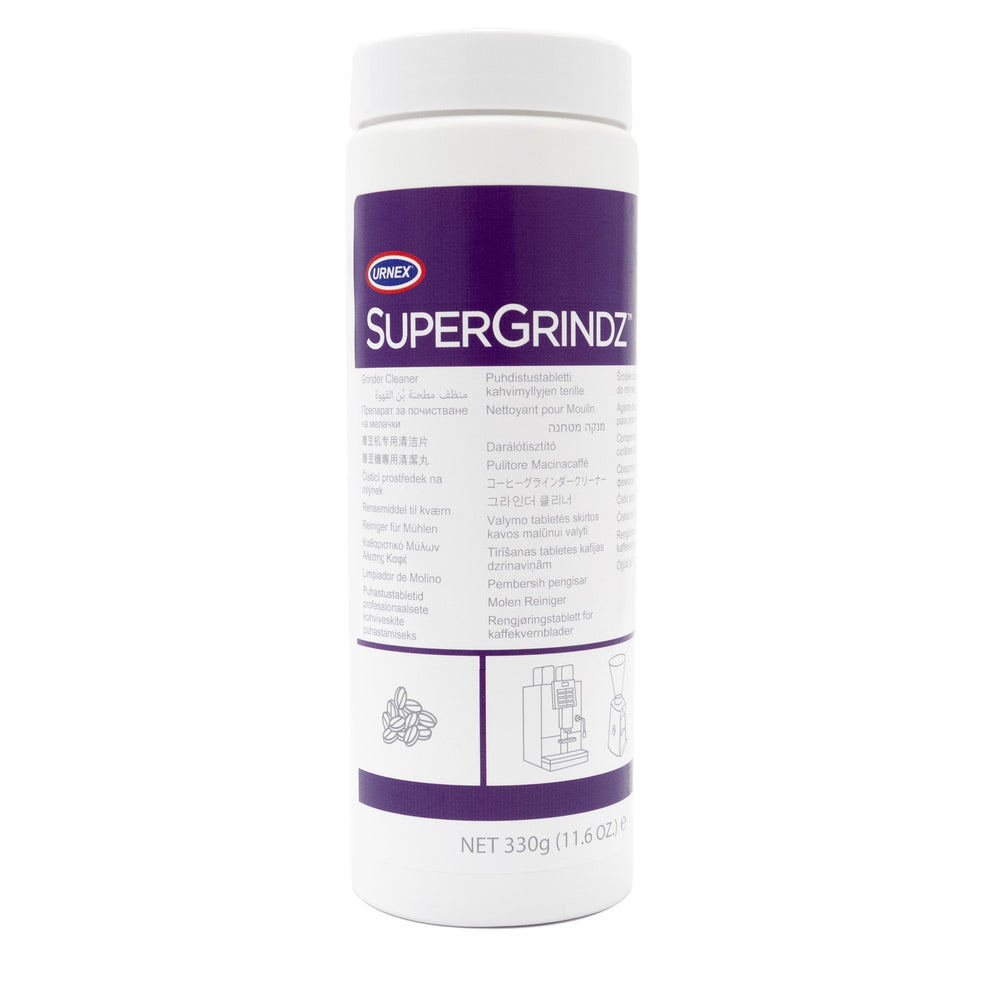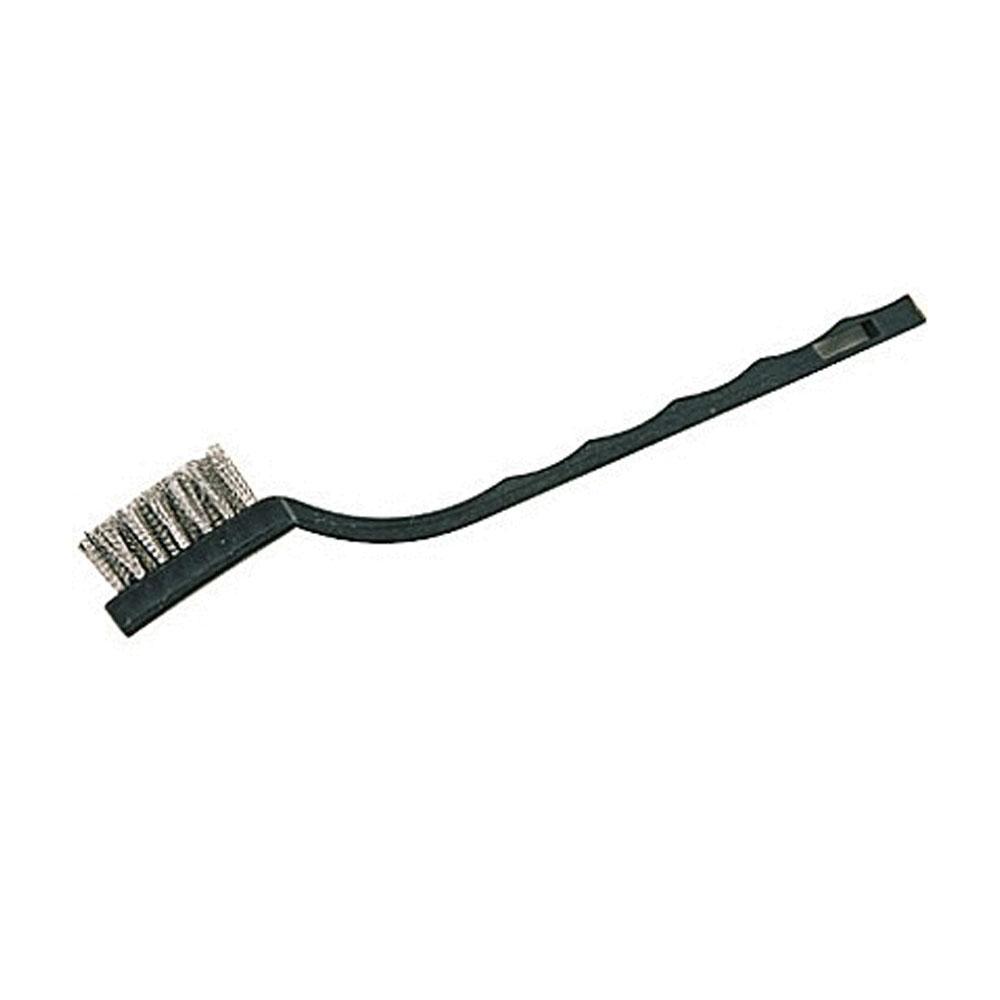How to Clean a Coffee Grinder
No one likes bitter, weak, bland, no crema, over-extracted, terrible smelling, or burnt tasting coffee. All too often we talk to people about the coffee they're brewing and how it doesn't live up to their standards. Nine times out of ten their first reaction is that the espresso machine is not working correctly. We hear all the time that "My machine is overheating", "It’s brewing with too much pressure", "I'm not doing anything differently so it has to be the machine". But let's take a small step back and start with your grinder.

The Complete Guide to Espresso Machines
Cleaning Your Coffee Grinder
Cleaning your grinder is essential to ensuring that you get the best tasting coffee from your equipment. It should be part of your regular maintenance of your equipment, and fortunately, Urnex makes cleaning products for standalone grinders and super-automatic espresso machines. Grindz is a cleaner for standard grinders and SuperGrindz is used for super-automatic espresso machines. These products are designed to remove any coffee oils and residue from your grinder's burrs.

$38.00

$44.00
Over time, coffee oils and grounds can become lodged between the burrs. The grounds become stale and the oils can begin to change the taste of the coffee you brew. These cleaners are food safe and made from cereals and grains. All you need to do is simply remove any coffee from the grinder and set the grind to a medium setting. Place the tablets in the bean hopper and grind away; the Grindz will remove the stale grounds and oils that have built up over time.
When you're finished with the Grindz, refill the hopper with coffee and run the grinder until any of the residual Grindz powder has been pushed out of the grinding chamber. If there's still a little in there, it's completely food safe (Marc may have even eaten a Grindz tablet before) but it won't do any favors for your extraction or the flavor of your coffee.
Can You Clean a Coffee Grinder With Rice?
Rice might work wonders if you dropped your cell phone in a puddle, but it's not something we recommend when it comes to cleaning your coffee grinder. Coffee grinders are engineered to grind roasted, whole bean coffee. The density and hardness of the beans are all within the expected use case of a grinder, rice isn't. It's similar to the "down home" knowledge of using vinegar in place of descaler, and in both cases we don't recommend it.
Not only are rice and vinegar (or rice vinegar for that matter) not formulated to clean coffee equipment, but most manufacturers will void your warranty if they find out that you've used rice in your grinder. So, if you wind up damaging your grinder by trying to clean it with rice, stale coffee may be the least of your problems.
Cleaning Your Grinder's Burrs

Ground coffee builds up on the surface of your burrs and needs to be brushed off.
In addition to cleaning your grinder with a product like Urnex Grindz, it's important to perform a deep clean on the burrs and on the grinding chamber. Grindz do a good job or removing surface oils and stale grinds, but older coffee can become impacted between the teeth on the burrs, and in that case, you'll want to open up the grinder and remove them. Once inside, it's also a good idea to clean out the grinding chamber as well.
On most grinders, the top burr is the easiest to remove, though we recommend removing both for the most thorough cleaning. As I mentioned, coffee fines get wedged into the burrs over time, and they can't be removed with a grinder cleaner alone. As the fines build up, they reduce the total cutting surface of the burrs and make it more difficult to grind coffee. If you think of your grinder like your teeth, you brush your teeth every day, but you still go to the dentist twice a year to get them cleaned.
Using Grindz regularly will help a lot in terms of general freshness, but you'll still want to remove the burrs for deep cleaning at least once a year. That said, the oil content of your coffee and your total volume will determine if you need to clean more frequently.
To clean the burrs, you'll want a good stiff bristled brush that can dislodge the grinds from the cutting teeth. Something like the Urnex Coffee Grinder Burr Cleaning Brush is a good option.

$9.95
Thoroughly brush your burrs to remove built up coffee, you'll be amazed how clean you can get them (and how satisfying it is). If you're in the market for a new grinder, it's important to note that some models allow you to remove your burrs without losing your grind setting. Companies like Ceado and their E37 series of grinders allow you to maintain calibration by mounting the top burr to an adjustment assembly that can be removed in its entirety.
The other maintenance item I mentioned is cleaning the grinding chamber itself. The grinding chamber is the area surrounding the burrs that the whole beans fall into and that the ground coffee is pushed back out of. When people refer to "grind retention" it typically refers to coffee that is deposited into this chamber that will not make its way back out of the grinder. When removing your burrs for cleaning, it's the perfect opportunity to clean out any coffee that has collected inside the grinding chamber.
One method for removing this coffee is to use a brush in combination with a vacuum. You can dislodge any stuck grounds with your brush and suck them up with the hose attachment for your vacuum. Alternatively, a brush and some compressed air can be used to dislodge and blow any stuck grinds out of the chamber. Once everything is fully cleaned, you're free to reinstall your burrs and reassemble your grinder. You'd be amazed at just how much coffee can build up in there!
Changing the Coffee in Your Grinder

If you find yourself experimenting with different coffees on a fairly regular basis, it's important to make sure that you've fully removed the last coffee you were grinding before trying something new. In the Whole Latte Love kitchen, we've been subject to our fair share of Frankenbrews from a half full grinding chamber. Take it from us, it's not fun.
Even if your bean hopper is empty, there is still coffee inside of the grinder. That's true even if you're running the grinder and nothing comes out. Coffee still builds up inside of the grinding chamber, the chute, and on the burrs themselves. This older layer of coffee won't be pushed out until you've run new coffee through to replace it. Low or zero retention grinders are less affected by this issue, but if you're ever changing to a new coffee, always run some through the grinder before brewing. You'll also want to dial in your grind for your new coffee to ensure optimal extraction.

How To: Basic Espresso Technique - Dialing in Grind Size
Just like your car, your espresso machine, and anything else you own, your grinder needs some TLC to perform at 100%. If you've never cleaned your grinder before, there's no better time than now to get on it!
 Canada
Canada
